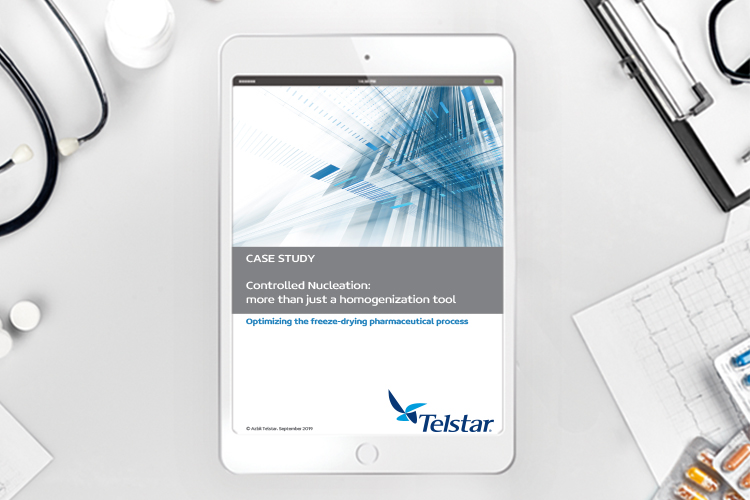Case Study: Controlled Nucleation: more than just a homogenization tool
Posted: 9 December 2019 | Telstar | No comments yet
Abstract
The vacuum-induced nucleation system controls and affects ice crystal size and distribution. In addition, it manages to homogenize the moment when the freezing starts so that all the vials nucleate at the same time, in a few seconds, compared to the spontaneous nucleation that takes at least 30-45 minutes. Developed by Telstar under “Lyonuc” brand, this method based on controlling the temperature and pressure to induce the first ice crystals generation (nucleation) at the freezing phase, also ensures the uniformity and homogenization of the vials in all the batches, respecting the product’s physico-chemical properties. It is particularly advantageous for long duration freezedrying cycles where the benefit of reducing the drying time is much greater. This case study shows the results after implementing an induced nucleation process on an industrial freeze dryer.
Customer issue
In freeze drying, the complexity is not just related to the high-end technology of the machine but also to the process itself. The development of a freeze-drying cycle is a critical step towards an efficient and repetitive batch.
Related content from this organisation
- Press release: Freeze drying: New Telstar Usifroid platform for retrofitting & maintenance
- Press release: Telstar: 360 degrees GMP consultancy & engineering solutions at CPhI
- Whitepaper: Digital transformation of medical devices sterilisation by EtO
- Case study: New trends: reducing GWP impact on GMP freeze drying processes
- Case study: Challenges in manufacturing high value lyophilised oncology drugs






